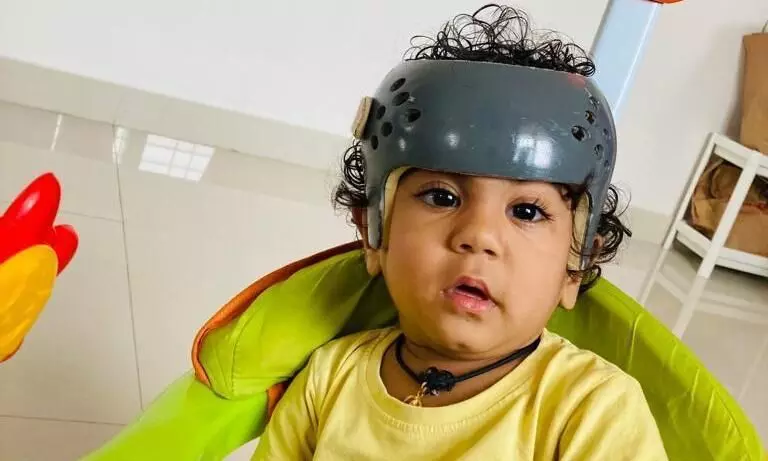Rare surgery performed on newborn with fused skull at Kamineni Hospital in LB Nagar
Cases like these are extremely rare, occurring in only one in 3,000 infants, usually due to genetic factors, doctors said
By Newsmeter Network
Rare surgery performed on a new born baby at Kamineni Hospitals
Hyderabad: Doctors at Kamineni Hospital, LB Nagar, performed life-saving surgery on a newborn whose skull was hard in areas that should have been soft, indicating premature closure.
What happens when a baby’s skull is prematurely shut?
After birth, a baby’s skull remains soft in certain areas, leaving gaps to allow the brain to grow. However, in rare cases, these gaps close prematurely due to genetic reasons, causing increased brain pressure, abnormal head growth and vision issues.
Early detection and surgical intervention can resolve this condition, but delays can lead to severe complications. Doctors at Kamineni Hospital, LB Nagar, encountered this rare case and had to perform crucial surgery on the infant. Consultant Neuro Surgeon and Minimal Access Brain and Spine Surgeon Dr S Ramesh provided details about the procedure.
One in 3,000 infants suffer from it
“A 3D printing professional from Warangal brought his three-month-old baby for a routine pediatric checkup. However, the doctor noticed that the baby's skull was hard in areas that should have been soft, indicating premature closure. The case was referred to Kamineni Hospital for further evaluation and treatment. After conducting all necessary tests, we performed an endoscopic procedure called endoscopic suturectomy to reopen the fused areas of the skull, creating the necessary space for the brain to grow. Cases like these are extremely rare, occurring in only one in 3,000 infants, usually due to genetic factors,” explained Dr Ramesh.
He added, “Following the surgery, helmet therapy is crucial. The baby needs to wear a specially designed helmet for 12 to 15 months, for about 22-23 hours daily. The helmet helps guide brain growth by restricting growth in certain areas while allowing it in others. These helmets are not readily available locally, so we procured one from Bengaluru. The helmet is made of multiple layers of cushioning, which are adjusted as the baby grows. Currently, the baby is in good health. Regular follow-ups and consistent use of the helmet have been advised to the parents.”
Dr Ramesh also credited the success of the surgery to the advanced medical facilities at Kamineni Hospitals, particularly the expertise of the anaesthesia department, skilled medical staff, and experienced nursing team.